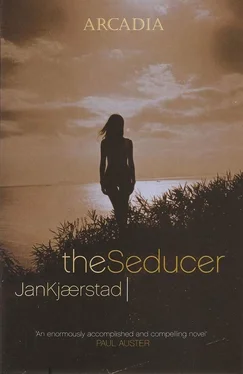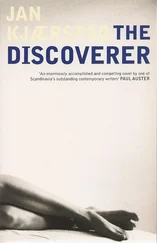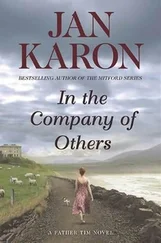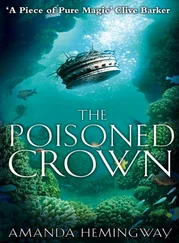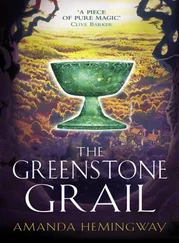So Jørgine told them the story of ‘the young businessman’ who had rung her doorbell one day and asked to see her pictures. Jonas had all but forgotten the paintings that he had helped to collect. As recently as his first year in high school he had called in on his grandmother a couple of times after classes; he particularly remembered one visit to the Art Centre, occasioned by a biennale of works by young Nordic painters which had caused quite a stir, when he had persuaded his grandmother to buy a couple of early works by painters as diverse as Bjørn Carlsen and Odd Nerdrum, before celebrating a job well done not, as previously, with a visit to the Studenten ice cream parlour but with dinner — meatballs and stewed cabbage — at Restaurant Krølle, where his grandmother, clearly very much at home, impressed on Jonas the importance of only buying pictures by artists who were endeavouring to break new ground. ‘Like Knut Rose,’ she said, thinking of the boldly coloured paintings by him which she had acquired in the late sixties, prompted, needless to say, by that unerring tingling between Jonas’s shoulder-blades.
This ‘young businessman’, as Jørgine called him, wandered from room to room of the big flat in Oscars gate in a daze, hardly crediting what he was seeing; over the years Jonas’s grandmother had hung the walls with an impressive collection of works by young Norwegian artists, together with a few pictures from the fifties by Jakob Weidemann and Inger Sitter and a couple of Munch lithographs. When he had regained his breath he made Jørgine an offer on the spot for the whole collection. A very generous offer. More than it was worth. A lot more, by Jørgine’s reckoning. He insisted. She asked him to let her think it over. The following day she took him up on his offer, sold the whole lot, apart from four pictures which she later gave to Jonas, as a special thank-you to him.
‘Here’s the money,’ said Jonas’s grandmother, ‘and now I’ll take a little more port, if you don’t mind. Åse, stop looking so worried.’ Suddenly Jonas saw his grandmother as level-headed countrywoman, triumphant Churchill and wealthy patron of the arts all rolled into one; these three facets of her personality seemed to have synthesized into a greater whole, or perhaps only now were they seeing the real Jørgine Wergeland. ‘With this money you’ll be able to build that new house,’ she said. ‘Now that’s not so bad, is it?’
No, it was not so bad, and thus Jonas learned that the price of beauty, too, is constantly rising and that it can be converted into something concrete: a fine little brick-built house nestling under the reddish-brown granite face of Ravnkollen, for example. Jonas’s family always maintained that their house had been built by artists: by a bricklayer named Widerberg, a joiner named Rose and a plumber named Johannessen.
I might also add that Jonas’s grandmother most definitely did not need too feel bad about her ‘young businessman’. He had immediately recognized the value of Jørgine Wergeland’s unique collection of experimental works by young artists, the majority painted at a stage when they were in the process of breaking away from teachers and traditions and trying out new ways of painting. In other words, this man had a ‘nose’, and a nose for fine art at that. Before the seventies were out, Jens Johannessen, Frans Widerberg and Knut Rose — to name but three — would all, in their turn, score major successes as exhibitors at the Bergen Arts Festival and representing Norway at the Biennale in Venice. More to the point, however, is the fact that the ‘young businessman’ had detected something which escaped the attention of all but a few at that time: namely the first signs of what would later be referred to as the ‘yuppie decade’, which began to manifest itself towards the end of the seventies. Suddenly, works of art were fetching unprecedented sums of money — not only because they represented an investment and a speculative venture but also because they actually accorded the buyer a certain cachet. For instance, at the height of this wave, a picture by the not particularly inspiring, late nineteenth-century artist Erik Werenskiold was sold at auction for two and a half million kroner, and even a painter from our own century such as Kai Fjell could command prices of up to two million kroner for a picture. So even if, with a few exceptions, each of Jørgine Wergeland’s paintings on its own might not have been representative of such massive price increases, as a whole , as a collection, they constituted a very attractive proposition. Thus, when the time was right, her ‘young businessman’ was able, in his turn, to sell the collection to another ‘young businessman’ at a price three times greater than the exorbitant price he himself had paid.
If it is any consolation, I should just say that there is bound to come a day when the general public will enjoy these pictures, when this second, or a third, ‘young businessman’ is getting on in years and decides to do penance for his sins by building a magnificent art gallery as an annexe to the empire he has established almost solely by picking up the phone and saying ‘sell’ or ‘buy’.
What is more to the point, as far as our story is concerned, is that his grandmother’s transaction opened Jonas Wergeland’s eyes to the fact that this spine-tingling sensation of his could, as it were, be turned into hard cash. In which case he saw no reason why it should not someday be possible to trade in his own collection for something he truly dreamed of. You see, Jonas Wergeland did not collect paintings, he collected women.
And now you are standing in the Villa Wergeland, paid for, years ago, by your grandmother’s paintings, and you remember that you were on your way to the dining-room, and now you do actually walk through to the dining-room to check if the paintings are gone, if they have been stolen, and you do not need to switch on the light because you can see that the pictures are still there, they seem almost to shine in the dark, with a glow several layers thick, paintings you once singled out yourself, but what good does that do now, you think, what’s the use of a silver thread running down your spine now, you think, what the fuck use is art to anyone anyway, you think, and you trail back into the living room and you see the picture of Buddha and once again you are confronted with Margrete, dead, on the floor, and you have the urge to bend down and take her in your arms, hold her like a little child, tight against you, like a sculpture by Gustav Vigeland you think, man with a woman in his arms, you think, but you do not do so, you merely look and look, at her face, always that face you think, do you remember how I managed to ski all the way down the hills to Movatn, you ask out loud, all the way without falling once, for the first time, you say out loud, looking and looking at her, feeling your eyes fill with tears, the ache in your throat, a sword, you think, a sword at my throat you think, and now you are finally going to be chopped up and your limbs scattered around this room, as if across a vast, barren desert, you think.
Your eye falls on the bowl on the side table, filled with fruit, like an oasis you think, looking at the oranges and remembering how Margrete would peel an orange, slowly, in awe almost, and how she would split it up into wedges, ‘boats’ she called them, eyeing each one lingeringly, holding it up to the light as if it were a work of wonder, you think, before putting it into her mouth, and you remember how she savoured, really savoured, every boat, you think, and the word ‘boat’ pulls you up short, makes you think of a boat reversing, and you hear a whooshing sound, like water seething around the stern of a reversing boat and you listen, intently, until it fades, dropping to no more than a faint hum, or radiation, and again you are struck by the distinct odour of electronic equipment in use and of some gently heated synthetic material, mingling with the smell of charred logs and ashes, and you walk round the corner to find a television set, switched on, but with the sound turned down, and at first you cannot think what a television is doing here, or what a television is, anyone would think you had never seen such a contrivance before, but it reminds you of something and you lift your eyes to the row of blue transparent jars on the shelf above it, as if these were every bit as important, because these are Margrete’s jars and there are seven of them, just like in the fairytales, you think, and you have a mind to knock them to the floor, in protest against something or other, but you do not, you merely look at them, at the delicate, transparent blue in the dim light and gradually it comes back to you, what it is, that machine sitting below the blue jars, what it is used for, pictures, you think, a screen you sit and look at, you think, and something slowly dawns on you, the way it does when you gradually begin to recognize someone who has said hello to you only once they eventually say their name, and the machine is switched on, you think, surprised, it must have been on all the time, you think, even as Margrete was dying, you think, as if this holds the key to it all, and you stand there looking, looking and looking, but you cannot make head nor tail of the images, neither what they represent or how they hang together.
Читать дальше
